
We are delighted to welcome you to the Planetarium!
You can schedule a private show in the Planetarium for your group of 1-100 people.
Planetarium shows run 45-60 minutes. In addition to the show itself, we have a small exhibit area. School-age students can do a scavenger hunt in the exhibit area. That takes about 10-20 minutes. The scavenger hunt can be done before or after a show.
We also have a gift shop with books, toys, and, of course, Astronaut ice cream.



Maximum Number of attendees: 100
Fee: Minimum group charge: $220 for up to 20 people for one program. $400 for two shows on one day. Additional people are $11 per person for one show. Additional people are $20 per person for two shows on the same day.
When: October - May: Weekdays at 10:00 am, 11:00 am, 12:00 pm, 1:00 pm
Saturdays at 12:00 pm, 1:30 pm, 5:00 pm
June: Weekdays at 10:00 am, 11:00 am, 12:00 pm, 1:00 pm
July and August: Monday - Thursday at 10:00 am, 11:00 am, 12:00 pm, 1:00 pm
Weekdays evening requests will be considered individually
Insurance: Raritan Valley Community College requests a Certificate of Insurance from all visiting groups.
Schedule a Trip: Fill out our Reservation Form
Contact: planet@raritanval.edu for more information or call the office at 908-231-8805 x5.
All shows include a live introduction to what stars and constellations we can see in tonight’s sky. If you prefer, you can choose one of our other “short” programs listed farther down this page.
Astronomy Programs - Elementary Grades
Most shows include a live introduction to what stars and constellations we can see in tonight’s sky. If you prefer, you can choose one of our other “short” programs listed farther down this page.

| Rockin' Rocket Ride – Designed for Grades PreK-K Join us on an adventure into space to learn about the Sun, Moon, planets, and stars. Young explorers use their imaginations to become astronauts and travel around our solar system. |

| The Rocky Planet Picture Show – Designed for Grades K-3 The first four planets closest to the Sun may not be as different from each other as you think. The outer planets are made of gas and clouds, but what about their moons? Are they like our inner planets? Let’s compare and contrast these worlds. |

| The Weather – Designed for Grades K – 2 Use our five senses to observe and predict weather. Discover different cloud types and how they help us predict the weather. What are some of the tools people use to measure weather? Learn the parts of the water cycle. |
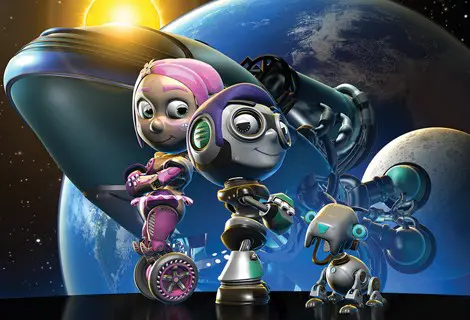
| The Accidental Astronauts: An Earth-Sun-Moon Adventure – Designed for Grades PreK – 3 Robo-kids Cy, Annie and their dog Armstrong get a lot more than they expected from their class field trip in an impromptu adventure. Travel along exploring the Sun, Earth and Moon, with a witty starship computer as navigator and guide. Race along on the surface of the Moon! Collect an asteroid sample in low gravity! Survive a solar storm! |

| Magic Tree House: Space Mission – Designed for Grades K – 4 From the authors of the best-selling novel series, join Jack and Annie as they discover the secrets of the Sun, Moon, planets, space travel, and more. Who can help them answer the mysterious "M's" questions? None other than an astronomer, an astronaut, some web surfing, and some thoughtful reflection. |

| The Little Star that Could – Designed for Grades 1-3 Travel with an average yellow star on his quest to get a “name” and a planet to call his own. A “cool” red star, a “hot” blue star, a dying star, double stars, and the Milky Way Galaxy teach the Little Star some important things about being a star. Imagine Little Star’s surprise when he discovers planets already going around him! After the story, we’ll discover some of the stars and constellations we can see in tonight’s sky. Supports NJSLS-Science: 2-PS1-1 Matter and Its Interactions, 5-ESS1-1 Earth’s Place in the Universe |

| Perfect Little Planet – Designed for Grades 1-4 Imagine the ultimate space vacation! What if you could travel the galaxy to find that ideal place? Discover our solar system through a new set of eyes – a family from another star system seeking the perfect vacation spot. Fly over the surface of Pluto, our best known Dwarf Planet. Dive over the ice cliffs of Miranda. Sail through the rings of Saturn. Feel the lightning storms at Jupiter. And walk on the surface of Mars. Which destination would you choose? This is the solar system journey for space travelers of all ages. Created by the same folks who made “The Secret of the Cardboard Rocket,” this new show is for the same audience and covers the same topics, just with more up to date information. |

| Follow the Drinking Gourd – Designed for Grades 2 - 4 Learn to find the Big Dipper and several other constellations in our night sky. Then, join a slave family as they use the Big Dipper as a guide to escape oppression in the South. Sing along with the slaves who used the song of the Drinking Gourd to travel north on foot from Alabama to Canada. Based on Jeanette Winters’ book by the same title, this show describes the astronomy behind the slave song “Follow the Drinking Gourd.” |

| Earth, Moon, and Sun (and Coyote) – Designed for Grades 2-5 Coyote has a razor-sharp wit, but he’s a little confused about what he sees in the sky. Join this amusing character (adapted from Native American oral traditions) in a fastpaced and fun show that tells Native American stories, explores lunar phases, eclipses, and other puzzles. Engaging and immersive, “Earth, Moon & Sun” examines how humans learn through space exploration. This program includes a brief tour of Supports NJSLS-Science: Earth’s Place in the Universe 5-ESS1-2. Space Systems MSESS1-1 |

| The Problem with Pluto – Designed for Grades 3 – 6 Follow Lucy on her trip through the solar system as she gathers data on Pluto’s status as a planet. Discover current information about the planets and investigate where Pluto belongs in the overall structure of the solar system. After the story, we’ll discover some of the stars and constellations we can see in tonight’s sky. |
Astronomy Programs - Middle School-Adult
All shows include a live introduction to what stars and constellations we can see in tonight’s sky. If you prefer,
you can choose one of our other “short” programs listed farther down this page.

| Asteroid: Mission Extreme Go on a journey to discover how asteroids are both a danger and an opportunity. The danger lies in the possibility of a cataclysmic collision; the opportunity is the fascinating idea that asteroids could be stepping stones to other worlds – veritable way-stations in space – enabling us to cross the Solar System. The challenges are enormous, but a mission so extreme could ultimately lead us to protect our planet and inhabit others. Explore what it would take for astronauts to reach an asteroid and how such an adventure could benefit humankind. |

| Mars: The Ultimate Voyage What will it take to get to Mars? Explore this question in this new planetarium show. This dynamic, animated experience highlights real NASA research and initiatives that are preparing the next generation of astronauts to travel to Mars. It illuminates how creativity, collaboration, communication, and expertise in a diverse number of fields are key for the success of deep space travel—while also inspiring the next generation of STEM professionals! This planetarium show is produced by the Bell Museum, in partnership with NASA and UNC Morehead Planetarium and Science Center. |

| Phantom of the Universe: The Hunt for Dark Matter From the journey of protons racing through the world’s largest particle collider in Europe to up-close views of the Big Bang and emergent universe, and the nearly mile-deep descent to an underground experiment in South Dakota, a new planetarium show is designed to immerse audiences in the manifold search for dark matter. This program showcases this exciting exploration, from the Big Bang to its anticipated discovery at the Large Hadron Collider. |

| To Space and Back Space exploration is having a big impact on your life. Not only is it helping discover a universe of unimaginable scale and beauty, it’s reaching back down into our world and influencing the way we live. “To Space & Back takes you on an incredible journey from the far reaches of our known universe to our own planet. The technology that transports us through space is paving the way for the devices and apps we use everyday. What’s happening above and beyond is coming back down to Earth. |

| 5000 Eyes: Mapping the Universe with DESI The Dark Energy Spectroscopic Instrument (DESI) is creating the most detailed map of our nearby universe. Installed on the Mayall telescope on Kitt Peak in Southern Arizona, DESI's 5000 independently operated robots can measure the light from thousands of galaxies at once. Join us as we explore the science, instrument, and people behind this global endeavor. |
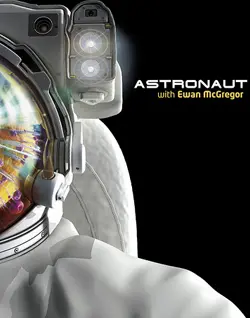
| Astronaut The exploration of space is the greatest endeavor that humankind has ever undertaken. What does it take to be part of this incredible journey? What does it take to become an astronaut? Experience a rocket launch from inside the body of an astronaut. Explore the amazing worlds of inner and outer space, from floating around the ISS to maneuvering through microscopic regions of the human body. Discover the perils that lurk in space as we subject “Chad” our test astronaut, to everything that space has to throw at him. |

| Big Astronomy: People, Places, Discoveries Big Astronomy shares the story of the people and places who make big astronomy and big science happen. This show takes visitors to the extreme sites where astronomy happens in the most extreme environments and with some of the most interesting people. *available with Spanish soundtrack |

| Black Holes Black Holes takes you on a journey through one of the most mystifying, awe-inspiring phenomena in the universe: a black hole. Where do they come from? Where do they go? How do we find them? Is there one on Earth's horizon? Explore the science and mystery of Black Holes. *23-minute and 40-minute versions available. |

| Dark Matter Mystery – Exploring a Cosmic Secret What keeps galaxies together? What are the building blocks of the Universe? What makes the Universe look the way it looks today? We know that approximately a quarter of the Universe is filled with a mysterious glue: Dark Matter. We know that it is out there, but we have no idea what it is made of. You will see why we know that Dark Matter exists, and how this search is one of the most challenging and exciting searches science has to offer. Join the scientists on their hunt for Dark Matter with experiments in space and deep underground. Will they be able to solve the Dark Matter Mystery? |

| Exploding Universe The universe we see and even our existence have been shaped by explosive events like supernovae: the death throes explosions of giant stars. These maelstroms create the elements which form complex molecules and life, seeding the galaxies for future star systems. Explosive events of all scales from the subatomic of particle accelerators mimicking conditions in the early universe, to super volcanoes, stellar deaths and even black hole mergers, form the fabric of our planet and the universe we live in. Our understanding of the universe and the matter, energy and forces which are its substance are tied to explosions of all sizes from the immense to the almost undetectably minute. |

| Forward! to the Moon Forward! To the Moon which engages audiences in NASA efforts to send both humans and robots to the Moon and Mars. Narrated by Kari Byron from CrashTest World and Mythbusters, the film features the NASA Artemis program along with the Commercial Lunar Payload Services (CLPS) program. |
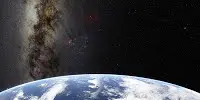
| From Earth to the Universe Experience Astronomy 101 in under an hour. The splendors of the Universe are revealed in this beautiful program. Our ancestors used the sky as a time keeper. Later, philosophers and scientists, from the Greeks to Galileo, began to unravel some of its mysteries. The invention of the telescope has allowed for still more discoveries. Fly by all the planets in our solar system, then travel beyond to view the birthplace and death of stars, and still farther to the myriad galaxies in our Universe. *available with Spanish soundtrack |
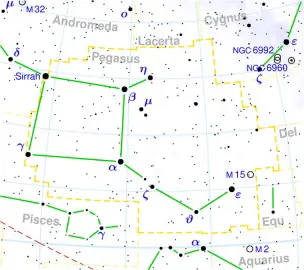
| Live Seasonal Sky Show Introduce your students to the wonders of the day and night sky. This program can be tailored to your needs. Please choose one or two of the topics listed:
Call to discuss topics you’d like to cover during this show. Supports NJSLS-Science: Patterns, Cycles |

| Moons of the Solar System A live, interactive presentation.
Supports NJSLS-Science: Patterns, Cycles |

| Natural Selection Join the young Charles Darwin on an adventurous voyage of exploration circumnavigating the world with the HMS Beagle. Witness the thrill of scientific discovery by seeing the world through Darwin's eyes, make observations of the most beautiful natural scenery, and let the pieces of a scientific puzzle slowly but surely fall into place. Allow Darwin himself to reveal this simple and most beautiful mechanism that explains the evolution of all life on Earth: natural selection, the single most wonderful idea anyone has ever had. |

| Our Violent Planet: Earthquakes, Volcanoes, Tsunamis We live out our lives on our planet’s fractured crust “plates” that pull apart, collide, grind past each other, and even sink below one another, producing violent earthquakes, volcanic eruptions, and catastrophic walls of water known as tsunamis. |

| Out There: A Quest for Extrasolar Worlds For thousands of years, we thought that we were the center of the Universe. Since then, science has taught us an astonishing amount about our cosmos. But even before we knew that our Sun was just one of many ordinary stars out there, people began to question if we were alone in the Universe. It’s possible that someone or something is, at this very moment, looking in our direction and asking the very same question. In its infinite nature, the Universe must have had endless possibilities to create other places like Earth. It is not the question of whether life exists elsewhere, but where we will have to look, and how we will find it — out there. |

| Solar System Odyssey Go on a futuristic journey through our Solar System. With Earth's resources being rapidly depleted, a tycoon sends our hero, Jack Larson, on a mission to discover a new home to colonize. This character-driven show is perfect for middle school students! |
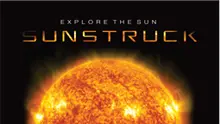
| SunStruck Discover the wonders of our Sun. It radiates energy in all wavelengths. How does it produce energy? What are the different layers of the Sun? Its incredible energy has supported life on Earth for millennia, but is now threatening our technology and way of life. Travel to the distant future to discover our Sun's connection to the Universe's cosmic cycle of life and death. |

| To Worlds Beyond: A Journey through the Solar System Take an amazing journey through our solar system, visiting each of the planets, plus the most famous dwarf planet, Pluto. Beautiful images taken from orbiting satellites blend with high-end animations and current information on our neighborhood of planets. |
Short Programs
Short Programs, running 10-15 minutes in length, can be added to any of the above
Planetarium shows.
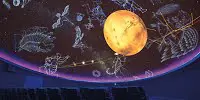
| Tonight’s Sky – Grades K-12 An introduction to the stars and constellations we can see in tonight’s sky. This is typically included with every show we do, but can be replaced by something else by request. |

| Space Shapes – Grades PreK-2 What shape are things in space? Are they round like a pancake or round like a ball? We’ll fly around the Moon, a planet, and look at our galaxy to see if they are the same or different. |

| Seasonal Sun Paths – Grades 1-12 We say the Sun rises in the east and sets in the west, but that’s not entirely accurate. We’ll observe the Sun’s rising and setting positions for each season and compare the lengths of the day over the course of the year. |

| Cosmic Address – Grades 3-12 Take a journey from Earth, past the Oort Cloud, the Milky Way Galaxy and continue to the cosmic microwave background radiation to see where our tiny planet fits into this great big Universe. |

| Solar Quest – Grades 4-12 Demonstrates how the Sun and Earth are interconnected and that we are "Living with a Star." High quality animations display solar phenomena such as fusion and light energy as well as solar surface features and events. Granules, solar flares and coronal mass ejections are highlighted. The show discusses the impacts of space weather and how the Earth’s atmosphere and magnetic field protects all life on Earth. |

| Losing the Dark – Grades 3-12 Starry skies are a vanishing treasure because light pollution is washing away our view of the cosmos. It not only threatens astronomy, it disrupts wildlife, and affects human health. The yellow glows over cities and towns — seen so clearly from space — are testament to the billions spent in wasted energy from lighting up the sky. If we all work together, we can bring back the dark of night to planet Earth. |
Programs in Spanish
The following shows can be presented with a Spanish-language soundtrack. We do not have the ability to run a show with two soundtracks (English and Spanish) playing at the same time.

| The Secret of the Cardboard Rocket / El secreto del cohete de carton – Grades 1-4 Presented in Spanish! Adventure through the solar system in the Cardboard Rocket! Travel with two children and their navigator, the talking astronomy book. Visit the Sun, the planets, the Moon and more. *available with English or Spanish soundtrack |

| Big Astronomy – Grades 4-12 Big Astronomy shares the story of the people and places who make big astronomy and big science happen. This show takes visitors to the extreme sites where astronomy happens in the most extreme environments and with some of the most interesting people. *available with English or Spanish soundtrack Supports NJSLS-Science: MS-ESS1-2, MS-ESS1-3, MS-ESS2-5, MS-PS4-2 |

| Mayan Archeoastronomy – Grades 4-12 In a feast of colors and sounds, Mayan Archaeoastronomy: Observers of the Universe makes a tour of 6 Mayan temples: San Gervasio, Chichen Itzá, Uxmal, Edzná, Palenque and Bonampak where the spectator dives into a Mayan world of knowledge about the importance of the orientations of its temples in relation to the movement of some stars like the Sun, the Moon and Venus. *available with English or Spanish soundtrack |

| Two Small Pieces of Glass – Grades 4-12 Explores the evolution of telescope technology from Galileo’s experiments to the Hubble Space Telescope and beyond. *available with English or Spanish soundtrack Supports NJSLS-Science: 3-5 ETS1-1, 2, 3; MST-ETS-1,2,3 |

| From Earth to the Universe – Grades 4-12 Experience Astronomy 101 in under an hour. The splendors of the Universe are revealed in this beautiful program. Our ancestors used the sky as a time keeper. Later, philosophers and scientists, from the Greeks to Galileo, began to unravel some of its mysteries. The invention of the telescope has allowed for still more discoveries. Fly by all the planets in our solar system, then travel beyond to view the birthplace and death of stars, and still farther to the myriad galaxies in our Universe. *available with English or Spanish soundtrack Supports NJSLS-Science: MS-ESS1-2, MS-ESS1-3, HS-ESS1-1,2,3,4 |

| Infinity Express & Cosmic Address – Grades 4-12 "Infinity Express" takes the audience on an exciting journey of discovery, from the search for solar systems to the mapping of the Universe. Then, “Cosmic Address” takes us on a journey from Earth, past the Oort Cloud, the Milky Way Galaxy and continues to the cosmic microwave background radiation to see where our tiny planet fits into this great big Universe. *Infinity Express available with English or Spanish soundtrack Supports NJSLS-Science: MS-ESS1, HS-ESS1-1, HS-ESS1-2, HS-ESS1-3 |
Seasonal Shows

| Halloween: Celestial Origins – Grades 4-adult What do you associate with Halloween? Trick-or-Treating, costumes…astronomy? After all, Halloween is an astronomical holiday! Learn the history of Halloween and how it fits into the seasons as a “cross-quarter day.” We will also explore the night sky and learn what planets, constellations, and stars will be out on your Halloween evening. |

| The Alien Who Stole Christmas – K-3 Discover the stars visible in the winter sky. Then follow Santa on a trip through the solar system when a friendly alien kidnaps him. The kids on the other planets need presents too, you know! |

| The Christmas Star – Grades 4-adult Over the years, many people have tried to explain the appearance of the Star of Bethlehem, as described in the Bible. Was it an exploding star, a comet or some other natural event in the sky? Potential natural explanations for the Star of Bethlehem and common modern-day misconceptions are discussed. The program includes a brief tour of the current night sky. |

| Our Lovely Skies – Grades 4-adult Constellations memorialize love lost and love gained. Planets are named for Roman and Greek gods who have stories of their own. Beautiful stellar nebulas remind us of celestial flower bouquets. Discover these treasures and more in this light-hearted, family-friendly show about the love stories in the sky. |
Sensory-Friendly
Many astronomy shows can be presented in a more sensory-friendly manner, if requested. We bring down the volume of the soundtrack. We may be able to keep the lights on or dim a little longer than in other shows. We also have a program specifically designed for visitors on the Autism Spectrum.
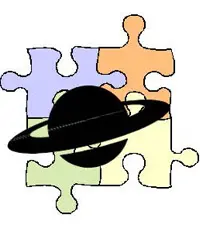
| The Sky Above (sensory friendly) A special astronomy and music show designed for families with children on the Autism spectrum or those with developmental disabilities. These sensory friendly shows, which are appropriate for audiences of all ages, will provide a comfortable and judgment-free space that is welcoming to all families. During the show, the doors will remain open so children may freely leave and return if they choose. Lights will be left dim (instead of dark) and the audio will be lowered and kept at a consistent level. “The Sky Above” show includes music,laser lights, stories, and information about the planets, the Moon and constellations. Content is presented on a kindergarten level. |
Laser Concerts
During a laser concert, lasers draw pictures on the dome while we play music. This is a sampling of some of our shows. Contact us for a full list of songs.
- Laser Kids (family friendly songs including “YMCA” by The Village People and “Waka Waka” by Shakira.)
- Laser Magic (family friendly songs including “We Will Rock You” by Queen and “Fireworks” by Katy Perry.)
- Pop Rock (family friendly songs including “Yellow Submarine” by the Beatles and “Call Me Maybe” by Carly Rae Jepson.)
- Lasers for Littles (family friendly songs including “Fruit Salad” by The Wiggles, “I Don’t Want to Live on the Moon” from Sesame Street, “Hawaiian Roller Coaster Ride” from Lilo & Stitch, and “The Lion Sleeps Tonight” by The Tokens.)
- The Beatles
- Bon Jovi
- Classic Rock (mostly 70’s songs)
- Grateful Dead
- Laser Ladies (all songs are by female artists)
- Led Zeppelin
- Laser Love (all songs have a love theme)
- Pink Floyd’s Dark Side of the Moon
- The Best of Pink Floyd
- Pink Floyd: The Wall
- Queen
- Rock of Ages (80’s songs from the Broadway/movie by the same title)
- Laser Springsteen
- Summer Lights (summer-themed songs including WipeOut, School’s Out, California Gurls, Watermelon Sugar, Cake By the Ocean)
- Taylor Swift
- Winter Wonder Lights (all songs have a winter / Christmas theme)
- Family Fright Light (family friendly Halloween-themed music, including “The Adams Family Theme Song,” “Monster Mash,” and “Ghostbusters.”)
- Fright Light (PG-13) (Features songs including “Alive” by Meatloaf, “Thriller” by Michael Jackson, and “The Devil Went Down to Georgia” by The Charlie Daniels Band.)
- La Musica (All songs are in Spanish. Artists include Calley 13, Enanitos Verdes, Enrique Iglesias, Ricy Martin, Santana, Jarabe de Palo.)



